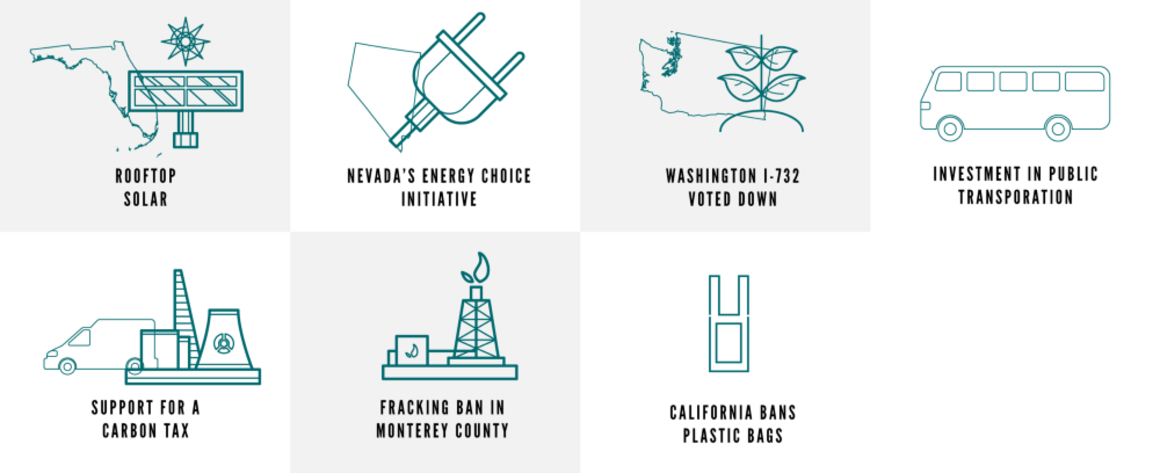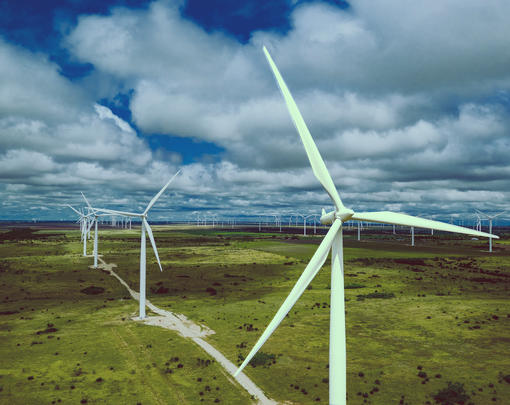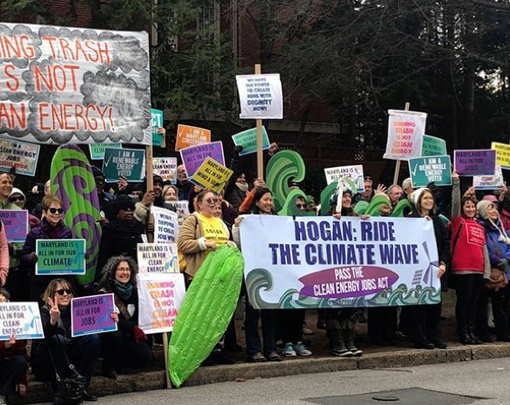Environmentalists around the world were paying close attention to the 2016 United States elections. On November 7th of this year, three days after the Paris Agreement officially entered into force, COP 22 began in Marrakesh, Morocco, with the high-pressured task of pushing forward the Agreement’s goals and strengthening many of the commitments within it. But as the United States’ election results trickled in, parties to the Agreement saw their fears become reality: The United States, the second largest greenhouse gas emitter in the world, elected a climate change denier as its next president.
During his candidacy, Trump promised to pull the country out of the Paris Agreement and undo the proposed climate mitigation plans drafted by the Obama Administration (particularly the Clean Power Plan). The day after he was elected, Trump appointed a climate change skeptic to head the Environmental Protection Agency’s (EPA) transition team, and is expected to nominate yet another climate skeptic to the vacant Supreme Court position, leaving pending and future climate litigations a small chance to succeed in the country’s highest court. The bottom line is that the 2016 United States election of Trump was “a gut punch to the planet.”
However, we can look at the 2016 United States elections as a glass half full, as there are signs of hope. While climate change was the only major issue not addressed in any Presidential debate — except for a single audience question — climate action was at the forefront of three state ballot questions, and indirectly related to several other state and municipalities’ referenda. And the good news is that when asked specifically about climate mitigation and related activities, American citizens are strongly in favor of action.
Perhaps the greatest climate victory of the night took place, ironically, in the Sunshine State. Entitled as “Rights of Electricity Consumers Regarding Solar Energy Choice,” and simply referred to as “Solar Energy Subsidies and Personal Use”, “Amendment 1” had two provisions. The first provision established the right “under Florida’s constitution for consumers to own or lease solar equipment installed on their property to generate electricity for their own use.” The second provision established that “State and local governments shall retain their abilities to protect consumer rights and public health, safety and welfare, and to ensure that consumers who do not choose to install solar are not required to subsidize the costs of backup power and electric grid access to those who do.” While the first provision was important — although not that relevant as state law already recognized the right of consumer choice — pro-solar advocates argued that the pro-solar language was included to misguide the public and divert attention from the second provision — an attempt to guarantee the constitutional right of utilities to repeal pro-solar programs, most notably, net metering. Floridians’ rejection of the proposed Amendment by 49.2 percent of the voters (it needed 55 percent to be approved) allows the Sunshine State to continue participating in the growth of distributed solar energy.
Nevada proved to be another “win” for the environment. “Question 3,” or “The Energy Choice Initiative,” passed with a resounding 72.4 percent of the votes. Formally entitled as “Nevada Legislature to Minimize Regulations on the Energy Market and Eliminate Legal Energy Monopolies Amendment,” the initiative sailed through — providing the first of two steps for the deregulation of Nevada’s electricity market. A second vote on the issue is due in 2018 which would effectively turn the initiative into a constitutional amendment. If the initiative is approved a second time, Nevada’s electricity market will open to competition, allowing consumers to choose different providers or generate their own electricity — finally breaking NV Energy’s legal monopoly over 1.3 million consumers.
The defeat of a third ballot measure — Washington’s “I-732” — is also considered a climate justice victory by many environmental and social justice groups. This victory is somewhat debatable as, if approved, the measure would have established the first statewide carbon emission tax in the country — starting at $15 per metric of carbon dioxide. But many progressive groups vocally opposed the initiative, claiming it did not promote an “equitable climate policy and just transition to a clean energy economy.” The main problem, as argued, is that the revenue-neutral nature of the tax contradicted the ultimate goal of initiative, by ensuring tax reductions for manufacturers and other sectors. In the end, the measure was rejected by 59.3 percent of the voters.
On the municipal level, the greatest climate victory was achieved by the City of Middletown, Wisconsin. On November 8th, citizens of Middletown were presented with two referendum questions: (1) should the city of Middleton act to reduce the threat of climate change through its actions and policies? and (2) should the city of Middleton support a federal price on carbon that funnels the profits back to taxpayers? Both questions were approved by a landslide with 80.6 percent and 72.3 percent of the voters respectively. As a result, the City of Middletown became the first American city to approve climate action and a carbon-and-dividend scheme through a referendum.
And there’s more! For instance, Monterey County, California, home of the Monterey shale formation, approved “Measure Z,” and joined the list of counties across the United States to ban new hydraulic fracturing activities. Also, an extraordinary 33 out of 48 initiatives related to public transportation investment were approved on the night of November 8th, 2016. Los Angeles’s “Measure M” is one of such approved initiatives. The Measure proposed a half-percent increase on sales tax, changing to one percent tax in the year 2040. The tax will fund transportation projects like the rail line to Los Angeles International airport, an underground corridor, an extension of the subway, the creation of several Bus Rapid Transit Lines and greenways, the improvement of side-walks and cycling infrastructure, and the expansion of bike share lines. The Los Angeles Traffic Improvement Plan was approved by 69.8 percent of the voters. Seattle also approved a $54 billion public transportation plan, largely to finance the city’s light rail system expansion, its commuter-train system, and its bus lines. “Proposition 1” was approved by 53.9 percent of the voters despite the proposed increases in property, sales, and car-tab taxes.
In addition to these climate change issues, broader environmental concerns were put to question, and approved, on November 8th, 2016. California approved “Proposition 67” with 52.9 percent of the voters, implementing a statewide ban on free plastic bags in grocery stores and other retail outlets. With 79.8 percent of the voters, Alabama approved “Amendment 2”, establishing a ban on the reallocation of state park funds to activities not related to the maintenance of state parks, with few exceptions. And with 80.1 percent of the voters, Missouri approved “Amendment 1” — “Keep Sales Conservation Tax” — extending for another 10 years the current one-tenth of one percent of the revenue from sales and use taxes to be used for soil and water conservation, state parks and historic sites measures.
Collectively, these victories show that, when specifically asked, citizens strongly favor climate mitigation and environmentally friendly actions — even when they simultaneously elect a climate change denier. It also underlines what many of us already knew — change on these critical issues will have to come from the bottom-up. Maybe the election of Trump will help this message to become clearer to all of us and unite those of us who seek changes.
The time is now and the work is ours to do.




